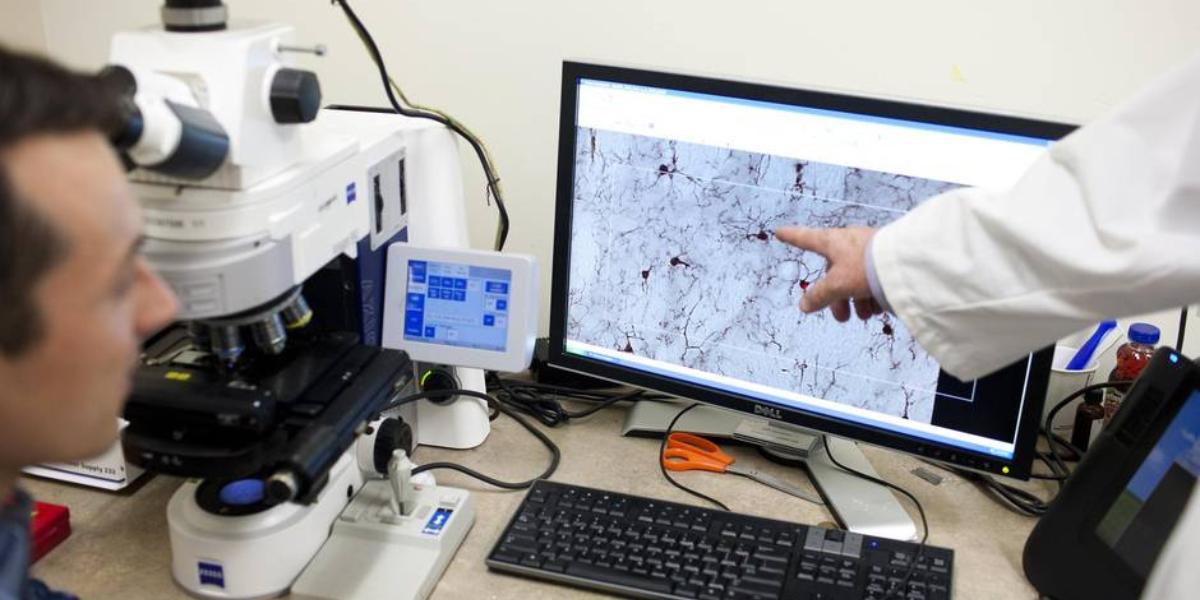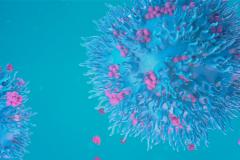Parents Ravi and Jenny first noticed that their daughter was starting to miss some development milestones when she was nine months old.
“Up until that point she had been developing perfectly normally,” says father Ravi. “But then we noticed that her balance was off while in a sitting position and we wanted to find out what was happening. We were in complete shock when she was diagnosed with a genetic disorder at 20 months old as we have no history of genetic disease in our families. When her doctors told us in 2020, they said that no treatments were available.”
Ravi and Jenny’s daughter has a rare pediatric neurodevelopmental disorder called GNA01 encephalopathy. These types of diseases arise from genetic variants that can either be inherited or occur ‘de novo’ — present for the first time in a family member as a result of errors during embryonic development. They can cause a range of clinical symptoms such as cognitive impairment or developmental delays and are major causes of disability and death worldwide.
Developing treatments for these diseases is difficult, in part, due to the complexity of the human brain and the difficulty of getting drugs and treatments past the blood-brain barrier. The blood-brain barrier acts as a cellular roadblock, preventing molecules in the bloodstream from accessing the brain.
Dr. Blair R. Leavitt and his team at BC Children’s Hospital Research Institute and the Centre for Molecular Medicine and Therapeutics (CMMT) are working with patient families like Ravi and Jenny to develop treatments for those without options.
To cure an in-born disease
To improve the lives of these children, any potential treatments for these genetic disorders must accomplish three things. First, the mutation causing the disorder needs to be identified. Then the team will need to develop a specific and targeted gene therapy for that child, and finally, this treatment needs to be delivered to the brain.
“Fifteen years ago, any one of these goals would have been near impossible,” says Dr. Leavitt. “But with today’s technological advances we feel that actual cures for these children are within reach.”
Identifying the genetic mutation that is causing the disorder has been made much easier through the advent of next-generation DNA sequencing (NGS). NGS allows for multiple (often millions) of strands of DNA to be sequenced in parallel — accomplishing in a matter of days what took the Human Genome Project over a decade.
However, just identifying the gene responsible is not enough. The team needs to determine what precisely is wrong with that gene. It could be that the disease-causing mutation leads to a gene product that is reduced, or present but in a mutated state, or is absent entirely. Then they need to determine how to create a genetic fix that will relieve the disease symptoms or ultimately cure the condition.
To better understand how the gene needs to be modified to correct for the disorder, the team is using a human brain cell model system to test their gene therapy solutions.

Modeling the brain
In the case of Ravi and Jenny’s daughter, Dr. Leavitt and his team are working directly with the family, including them in the research and in decision-making processes. Their child has a mutation in the gene G protein subunit Alpha 01 (GNA01) which is involved in regulating brain activity and the release of neurotransmitters.
Most children with GNA01 encephalopathy are non-verbal and are wheelchair dependent. Symptoms can also include severe intellectual disability, irregular and involuntary movements, and seizures.
“Our daughter is so bright, sweet, social and has the best sense of humor,” says Jenny. “We feel so blessed that she has developed normally cognitively and socially. But to think that she could not reach her potential due to this disease, which would leave her nonverbal and unable to walk, and that she may soon suffer from severe painful involuntary movements was beyond heartbreaking. We knew we had to give it our all in finding her a treatment.”
Last year, Dr. Leavitt secured funding to create a tailored gene therapy for this child. Using stem cells derived from Ravi and Jenny’s daughter, the team was able to create a cellular model of GNAO1 encephalopathy based on her specific genetic mutation. Researchers can now use this model system to explore how the mutation leads to disease and to develop a gene therapy approach.

Using the latest in gene editing technologies, including CRISPR-Cas9, the team will try dozens, if not hundreds, of genetic solutions to try and correct or treat the disease.
“CRISPR-Cas9 technology has revolutionized gene therapy,” says Dr. Leavitt. “We can now make specific corrections of genetic defects at the DNA level in selected cells throughout the body. This is a game-changer for children and adults who suffer from genetic disorders.”
Delivering treatment
The next task, once the correct gene editing therapy is developed, is to deliver the treatment to the affected cells in the body. That’s where Dr. Leavitt and his team are already one step ahead. Alongside industry partners (Incisive Genetics), they have developed technology to enable gene editing treatments to be efficiently delivered directly to cells throughout the body including brain cells. This same technology — a lipid nanoparticle-based delivery platform — has already been tested for a form of gene therapy and received FDA approval. In fact, similar technology was used for the COVID-19 mRNA vaccines developed by Moderna and Pfizer, demonstrating the safety and effectiveness of the approach.

“The innovative delivery system for gene editing that we have developed represents a very real opportunity to permanently cure many genetic diseases including rare neurodevelopmental diseases such as GNAO1 encephalopathy,” says Dr. Leavitt.
“If we are able to use these techniques to produce a therapy for this one child, it could pave the way for new treatments for many other diseases, offering relief at last to children afflicted by these devastating neurodevelopmental disorders.”
For Ravi and Jenny, the potential of this treatment means so much to their family.
“We feel so hopeful that with this treatment, our daughter can gain her abilities and thrive, reaching her full potential,” says Jenny. “Most importantly, we hope we can save her from suffering. Thanks to the rapidly developing field of gene editing and research being done by Dr Leavitt, we feel excited and hopeful for our daughter’s future!”




